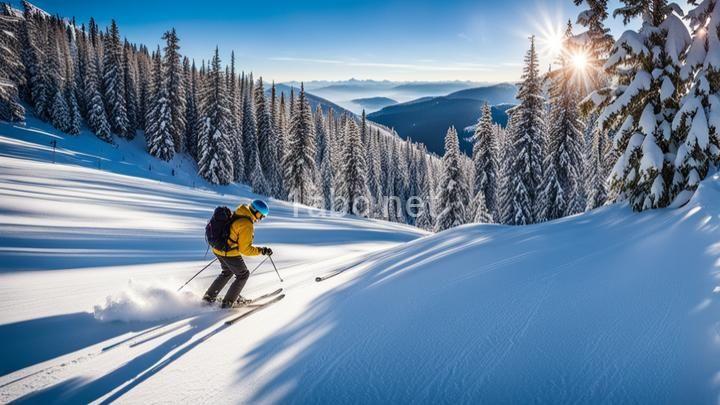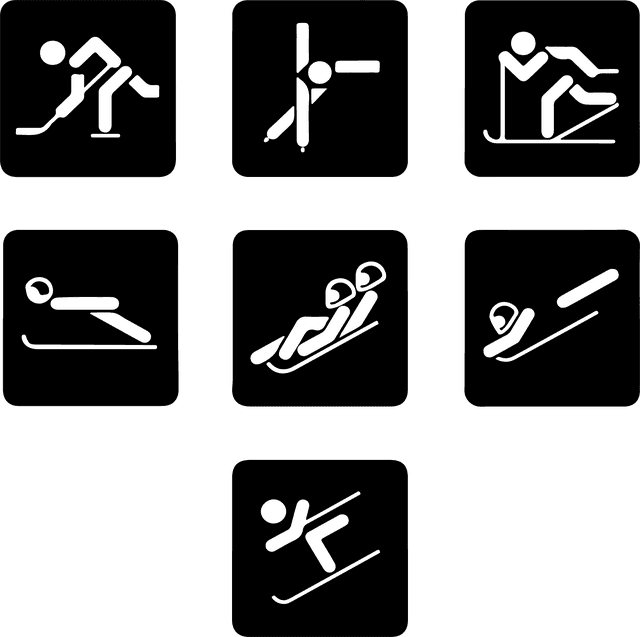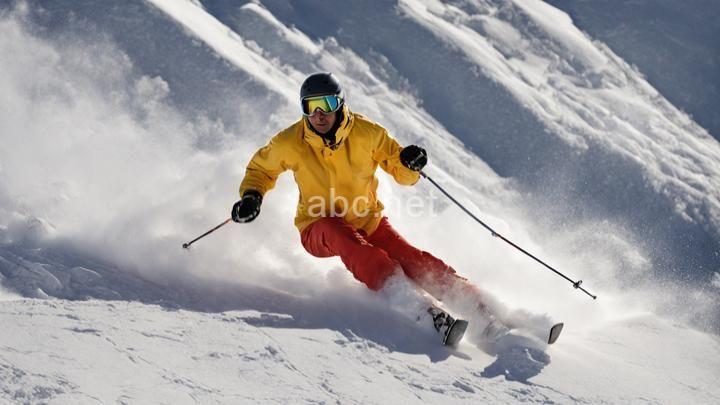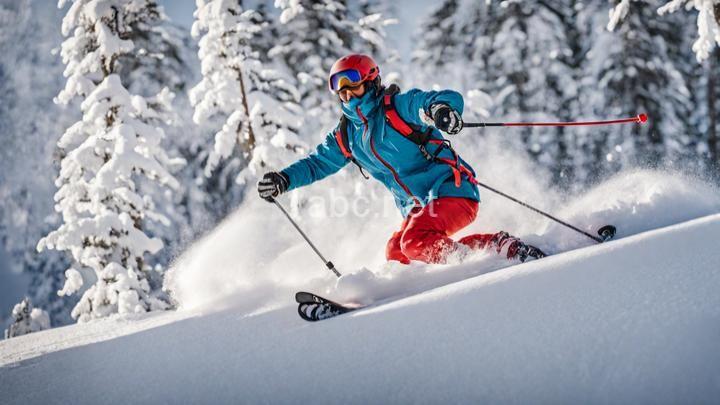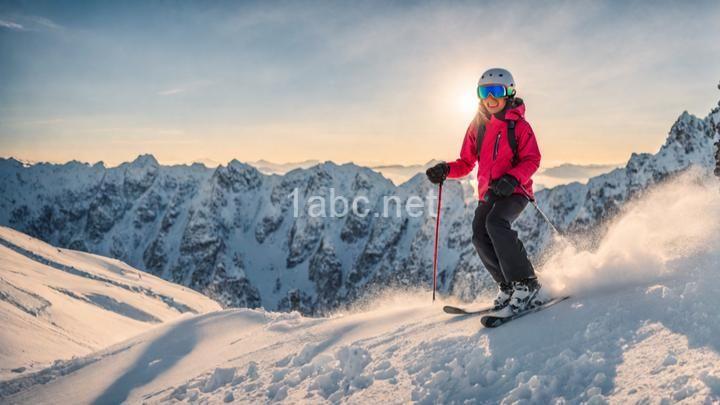Beyond Helmets: Lesser-Known Safety Measures for Skiers
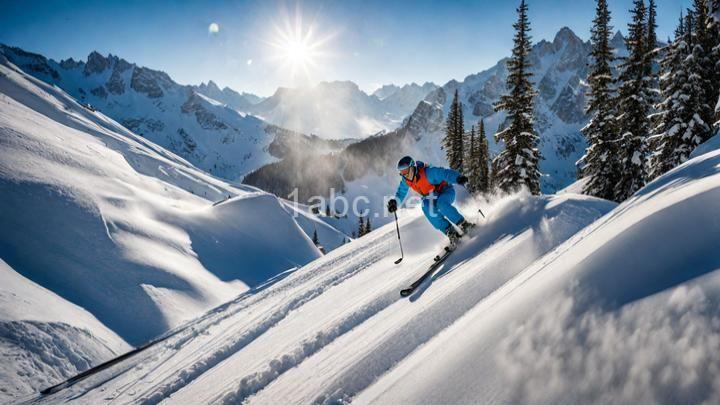
Introduction:
Picture this: you're standing at the top of a snow-covered mountain, the crisp winter air filling your lungs with a sense of exhilaration. As a skier, you know that the right equipment is essential for a safe and enjoyable experience on the slopes. But beyond the trusty helmet that safeguards your noggin, there are other lesser-known safety measures that can make a world of difference. In this blog post, we'll dive into the world of ski safety and explore the importance of going beyond helmets. So grab a cup of hot cocoa, cozy up by the fire, and let's get started!
I. Proper Layering for Optimal Protection:
When it comes to skiing, proper layering is key to staying warm, dry, and comfortable. Layering not only provides insulation but also allows you to adjust your clothing based on changing weather conditions. The three essential layers are base layers, insulating layers, and outer shell.
Base layers, typically made of moisture-wicking fabrics like merino wool or synthetic blends, are designed to keep you dry by pulling sweat away from your skin. Insulating layers, like fleece or down jackets, trap heat to keep you warm. Lastly, the outer shell, usually a waterproof and breathable jacket and pants, protects you from wind, snow, and moisture.
When choosing fabrics for each layer, opt for materials that offer both warmth and breathability. Avoid cotton as it retains moisture and can leave you feeling damp and chilly. Instead, look for technical fabrics like polyester or nylon blends that wick away sweat and dry quickly.
II. The Essential Gear Checklist:
While helmets are undoubtedly crucial, there are several other pieces of gear that deserve a spot on your skiing checklist. Let's take a closer look at some of them:
-
Goggles: Protect your eyes from the sun's glare, wind, and snow while enhancing visibility on the slopes. Look for goggles with anti-fog properties and UV protection.
-
Gloves: Keep your hands warm and protected from the elements with insulated gloves or mittens. Look for waterproof and breathable options for added comfort.
-
Knee Pads: Provide an extra layer of protection for your knees during falls or collisions. Opt for knee pads with a flexible and impact-absorbing design.
-
Wrist Guards: Help prevent wrist injuries, especially for beginners or those attempting more challenging terrain. Look for wrist guards with adjustable straps for a secure fit.
-
Back Protectors: Offer added protection to your spine in case of falls or impacts. Choose back protectors that fit snugly and are comfortable to wear.
While these are just a few examples, it's important to find gear that suits your specific needs and preferences. Consider trying out different brands or models to find what works best for you.
III. Prioritizing Sun Protection:
We often associate skiing with cold weather, but the sun can be just as powerful on the slopes. Protecting your skin from damaging UV rays is essential for long-term skin health. Here are a few tips to prioritize sun protection:
-
Sunscreen: Apply a broad-spectrum sunscreen with a high SPF to exposed areas of your skin, including your face, neck, and hands. Reapply regularly, especially after sweating or wiping your face.
-
Sunglasses or Goggles: Protect your eyes from harmful UV rays and glare by wearing sunglasses or goggles with UV-blocking lenses. Look for options that fit comfortably and provide adequate coverage.
Remember, the sun's rays can still be strong even on cloudy days or at higher altitudes, so don't skimp on sun protection!
IV. Importance of Hydration:
Staying hydrated is crucial for maintaining energy levels and preventing fatigue while skiing. Cold temperatures and physical exertion can quickly deplete your body's water reserves. Here are some tips to help you stay hydrated on the slopes:
-
Carry a Water Bottle or Hydration Pack: Having easy access to fluids will encourage you to drink regularly. Choose an insulated water bottle or a hydration pack that fits comfortably and doesn't hinder your movements.
-
Drink Before You're Thirsty: Don't wait until you feel thirsty to start hydrating. Drink water or sports drinks before, during, and after skiing to replenish electrolytes and stay hydrated.
Remember, prevention is better than cure, so prioritize hydration to keep your body performing at its best.
V. Understanding Safety Signage and Codes:
Ski resorts use safety signage and codes to communicate important information to skiers. Understanding these signs can help you navigate the slopes safely. Here are a few common signs and their meanings:
-
Hazard Signs: These signs indicate potential dangers such as cliffs, rocks, or steep drop-offs. Take them seriously and proceed with caution.
-
Directional Signs: These signs guide you on the right path and can indicate trail names, intersections, or ski lifts. Pay attention to these signs to avoid getting lost.
-
Trail Difficulty Ratings: Green circles indicate beginner slopes, blue squares are for intermediate skiers, and black diamonds represent advanced terrain. Be honest with your abilities and choose trails that match your skill level.
By familiarizing yourself with these signs and codes, you can make informed decisions and ensure your safety on the slopes.
VI. Avalanche Awareness:
While skiing offers thrilling adventures, it's important to be aware of the potential risks, especially in backcountry areas where avalanches can occur. Here are a few key points to keep in mind:
-
Avalanche Safety Equipment: If you plan to venture into avalanche-prone areas, invest in essential safety equipment like avalanche beacons, shovels, and probes. Learn how to use them properly and practice with them regularly.
-
Avalanche Safety Courses: Consider taking an avalanche safety course to learn about avalanche dynamics, terrain assessment, and rescue techniques. These courses provide valuable knowledge that can save lives.
Remember, safety should always be your top priority, and when it comes to avalanches, prevention and preparedness are crucial.
VII. Tips for Safe Skiing Practices:
Now that we've covered some of the lesser-known safety measures, let's wrap up with some general tips for safe skiing:
-
Maintain Control: Ski in control and at a speed appropriate for the conditions and your ability level. Be aware of other skiers and obstacles around you.
-
Avoid Collisions: Practice proper etiquette on the slopes and be mindful of other skiers. Give them plenty of space and yield to those downhill or in front of you.
-
Know Your Limits: Ski within your skill level and comfort zone. Pushing yourself too far can lead to accidents and injuries.
-
Follow the Rules: Familiarize yourself with the rules and regulations of the ski resort you're visiting. Respect closures, boundary lines, and designated areas.
By following these tips, you can ensure a safe and enjoyable skiing experience for yourself and those around you.
Conclusion:
As the snow glistens under the winter sun, it's easy to get swept away in the thrill of skiing. But it's important to remember that safety should always come first. Beyond helmets, there are a multitude of lesser-known safety measures that can enhance your skiing experience. From proper layering to understanding safety signage, each step plays a crucial role in keeping you safe on the slopes.
So, the next time you gear up for a day of skiing, remember to check off the essentials: layer up, protect your eyes and skin, stay hydrated, and familiarize yourself with safety signage and codes. And most importantly, ski smart and within your limits.
Now, go out there and make lasting memories, all while prioritizing your safety. Happy skiing!
FREQUENTLY ASKED QUESTIONS
What is Beyond Helmets: Lesser-Known Safety Measures for Skiers?
When it comes to skiing, wearing a helmet is definitely an important safety measure. However, there are also some lesser-known safety measures that skiers should be aware of. These measures can help to further enhance your safety on the slopes and reduce the risk of accidents or injuries. Let's explore some of these lesser-known safety measures beyond helmets:
-
Protective Eyewear: Wearing goggles or sunglasses specifically designed for skiing is crucial. They not only protect your eyes from harmful UV rays but also shield them from wind, snow, and debris. This can greatly improve your visibility and prevent accidents caused by impaired vision.
-
Appropriate Clothing: Dressing appropriately for skiing is essential. Wearing layers of clothing allows you to adjust your body temperature according to the weather conditions. It is important to choose waterproof and breathable materials to keep you dry and comfortable throughout your skiing sessions.
-
Proper Equipment: Using well-maintained and properly fitted ski equipment is vital for your safety. Ensure that your skis, boots, bindings, and poles are in good condition and suitable for your skill level. Always have your equipment checked and adjusted by a professional before hitting the slopes.
-
Knowledge of Skiing Etiquette: Familiarize yourself with the skiing etiquette and rules of the resort or mountain you are visiting. This includes knowing how to yield to other skiers, using appropriate hand signals, and understanding the right of way on the slopes. Following these guidelines helps to prevent collisions and maintain a safe skiing environment.
-
Stay Hydrated and Fuel Up: Skiing is a physically demanding activity, so it's important to stay hydrated and fuel your body with nutritious food. Dehydration and lack of energy can affect your focus and reaction time, increasing the risk of accidents. Carry a water bottle and have regular snack breaks to keep your energy levels up.
Remember, while these measures can enhance your safety on the slopes, it's also important to ski within your abilities and be aware of your surroundings. Enjoy your skiing experience while prioritizing your safety.
Why should I consider using lesser-known safety measures as a skier?
There are several reasons why you should consider using lesser-known safety measures as a skier. First and foremost, these measures can provide an added layer of protection and help minimize the risk of accidents or injuries on the slopes. While popular safety measures like helmets and goggles are important, lesser-known measures such as impact shorts, back protectors, and wrist guards can offer additional support and cushioning in case of a fall or collision.Another reason to consider lesser-known safety measures is that they can cater to specific needs or concerns. For example, if you have a history of knee injuries, using knee braces or supports can provide extra stability and prevent further damage. Similarly, if you are prone to wrist injuries, wearing wrist guards can help reduce the risk of sprains or fractures.
Additionally, using lesser-known safety measures can set a good example for others and promote a culture of responsible skiing. By embracing these measures, you can encourage fellow skiers to prioritize safety and take proactive steps to protect themselves on the slopes.
It's important to note that while these lesser-known safety measures can complement traditional ones, they should not be seen as a substitute for proper technique, training, or adherence to skiing rules and regulations. However, by incorporating them into your skiing routine, you can enhance your overall safety and enjoyment of the sport.
Remember, safety should always be a top priority when participating in any physical activity, and considering lesser-known safety measures as a skier can contribute to a safer and more enjoyable skiing experience.
What are some examples of lesser-known safety measures for skiers?
When it comes to skiing, safety should always be a top priority. While there are well-known safety measures like wearing a helmet and staying within your skill level, there are also some lesser-known safety measures that can help ensure a safer skiing experience. Here are a few examples:
-
Skiing with a buddy: It's always a good idea to ski with a friend or a group. Not only does it make the experience more enjoyable, but it also adds an extra layer of safety. In case of an emergency or accident, having someone else there can provide immediate assistance and help get the necessary help.
-
Carrying a whistle: A simple whistle can be a lifesaver in certain situations. If you find yourself in a difficult spot or in need of help, blowing a whistle can attract the attention of nearby skiers or ski patrol, allowing them to come to your aid.
-
Checking your bindings: Before hitting the slopes, make sure your ski bindings are properly adjusted and secure. Faulty or loose bindings can increase the risk of injury in the event of a fall or accident. If you're unsure about how to check your bindings, it's always a good idea to ask a professional for assistance.
-
Using sunscreen: While it may not seem like a safety measure, protecting your skin from the sun's harmful rays is crucial, especially when you're spending long hours on the slopes. Apply a sunscreen with a high SPF to all exposed areas of your skin to reduce the risk of sunburn and potential long-term damage.
-
Staying hydrated: Skiing can be physically demanding, and it's important to stay hydrated throughout the day. Dehydration can lead to fatigue and dizziness, increasing the risk of accidents. Carry a water bottle with you and make sure to take regular breaks to replenish fluids.
Remember, these are just a few examples of lesser-known safety measures for skiers. It's always a good idea to stay informed and be proactive when it comes to your safety on the slopes. Stay safe and have a great time skiing!
How do impact-resistant clothing and spine protectors enhance safety?
Impact-resistant clothing and spine protectors are essential components of safety gear that provide enhanced protection in hazardous environments or activities. These protective measures play a crucial role in minimizing the risk of injuries and safeguarding individuals from potential harm.Impact-resistant clothing, such as reinforced jackets, pants, and gloves, is designed to withstand high-impact forces. These garments are typically constructed using durable materials like Kevlar, which offers exceptional resistance against abrasions, cuts, and punctures. By providing an additional layer of protection, impact-resistant clothing acts as a shield against potential injuries caused by sharp objects, falls, or impacts.
Spine protectors, on the other hand, focus specifically on safeguarding the vulnerable spinal column from injury. They are usually worn underneath clothing and consist of padding or protective plates strategically placed to absorb and distribute impact forces. Spine protectors are especially crucial in activities that involve high-velocity impacts, such as motorcycling, skiing, or contact sports. By reducing the risk of spinal injuries, these protectors can prevent potentially life-altering consequences and ensure the well-being of individuals.
Together, impact-resistant clothing and spine protectors enhance safety by providing an extra layer of defense against various hazards. Whether it's protecting against cuts and punctures or reducing the risk of spinal injuries, these safety measures are designed to mitigate potential harm and increase the overall safety of the wearer. It is important to choose high-quality impact-resistant clothing and properly fitted spine protectors to ensure optimal effectiveness and maximum protection.
